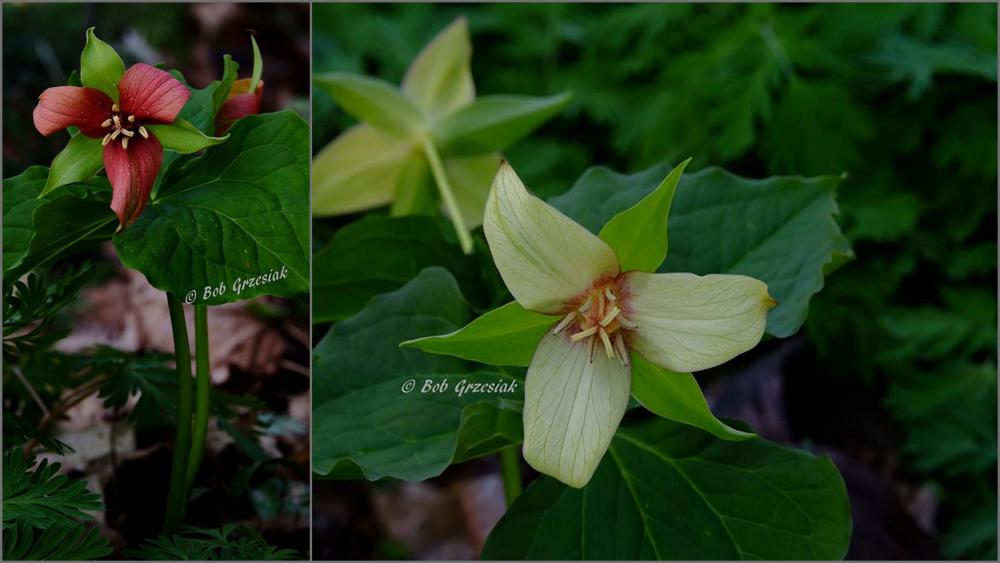-
Posts
239 -
Joined
-
Last visited
-
Days Won
3
Content Type
Profiles
Forums
Articles
Posts posted by Katie Grzesiak
-
-
Agree with CSK
-
 1
1
-
-
ISN is working on a grant proposal to create a strategic plan for bringing our ground-breaking Go Beyond Beauty program state-wide, and we need input from businesses! We're currently working on getting the Michigan Nursery & Landscaper Association to come to the table, but it would be useful to have businesses from throughout the state interested. Could you help us out by suggesting some?
Unsurprisingly, we have northwest lower Michigan covered, and I know of Van Atta's, Howe's, and Andy T's in mid-Michigan that I will be contacting. Where else should I go?
Thanks in advance!
-
They're not going to like this, but it's because it doesn't harm the economy (though arguments could be made), the environment (any more than any other corn monoculture, anyway), or human health (no, really, it doesn't).
Really, it's not a very useful question that's just guaranteed to start an argument with no satisfactory conclusion.

-
 1
1
-
-
Hi Sam, ISN usually just uses the Japanese knotweed ones. All the treatment is the same, and the ID isn't so different that most Regular Joes/Josephines would get confused.
That said, we're working to develop outreach materials that address both to be more accurate. They'll still focus on Japanese knotweed, since that's the one that's illegal, and just kind of group in giant knotweed (because its offspring when hybridized with Japanese is illegal!). I'll keep you posted.

-
Definitely native riverbank grape (Vitis ripara). It can certainly be aggressive (especially in areas of disturbance, like roadsides and new canopy gaps), but it has native checks-and-balances to keep it from going more than locally bonkers.
-
One of ISN's partners, the Grand Traverse Regional Land Conservancy, is using them with a large-scale autumn olive project (when they use Scout labor). They just started last year, so I'm not sure about long-term results, but so far so good!
To my knowledge, they are supposed to work for any woody invasive.
-
At the last MISC Core Team meeting, it was brought up that some folks are having trouble getting their crews on board. ISN has overall had success with this, so I thought I'd start a thread to share tips & tricks.
- Hire early. As soon as you know you have the funding, think about the positions (seasonal? year-round?) you want to hire. For seasonals it's especially important to get your jobs out there early! ISN usually tries to post seasonal jobs by early March and complete hiring by the end of March to get the best candidates, even though they won't start on the job until May. The later we wait, the harder time we have filling our jobs. Year-round jobs are easier to post at any time, as there are always folks looking.
- Have a clear position description. There are LOTS of good ways to do this. I've uploaded an example position for your reference, but as long as you've got the important info on there (what they're doing, where they're working, requirements, and how much they get paid), you're probably good. The most important thing for ME is to make sure I know what I want them to do, and a clear position description helps with that.
- Post widely. Share your job openings with partners and on your own website and Facebook, but post at colleges and universities and on nationwide job boards too! ISN keeps a list, which I've uploaded for your reference. Many need a login (free) for a website and require plugging your position description into a form (annoying & time-consuming, but worth it!), while others just require an email. Some universities and colleges have started using a shared service which saves time.
- Use a "grading matrix" for interviews. Interviews can happen in a lot of different ways, so do what you like best, but ISN has found it really useful to use a "matrix" at the end of each interview. It helps quantify your thoughts as numbers and quick-reference notes to make it easier to narrow down decisions and hammer on the important details. It's especially useful when more than one person is involved in the interviews. I've uploaded an example interview template, including the matrix (on the last page), in case you want to use something like this.
What works for you? How do you attract good candidates and make good decisions?
-
Generally speaking, because of herbicide use, we don't recommend landowners plant anything until treatments are finished--and that sometimes takes a while (years). If erosion is a big concern, grass plugs might be a good way forward, as all the herbicides we use (Milestone & Clearcast) are broadleaf-selective, and therefore won't kill grasses.
More to the point of your question, I can't think of any plants that can out-compete knotweed and stop it from spreading; it's far too good at what it does. Plus, just about any digging will just "enrage" the knotweed further.
-
Claire, I just saw your post, sorry. A quick look at the Grow The Rainbow site looks pretty good--the species list was a bunch of natives. The generic pack even let you pick your region.
HOWEVER, the "hummingbird and butterfly" pack looked pretty similar to the Cheerios list. Win some, lose some.
-
I'm with Nor; from what I can see on this photo, I'd guess S. rigida. Native, and great for pollinators.
-
We had late frosts this year and last year that knocked the knotweed back as well. For us, it mostly impacted the timing of our treatments by buying us another 2 weeks or so before treatment (since our spring treatments are timed based on how tall the plant is). It could very well cause the plant to do more spreading for the reasons you described, though we didn't notice this reaction by the plants.
Treatments of woody species are generally done in midsummer or fall, so the frosts didn't affect our treatment of those plants as much. Of course, we always celebrate an occasion that uses up some of the plants' energy for naught!
-
ISN has been working on controlling garlic mustard in a small residential area in Grand Traverse County since 2013, in large part because of the area's fantastic integration into the existing forest habitats. In previous years, garlic mustard choked out nearly all other vegetation:
As the years have gone by, the native vegetation (Dutchman's breeches, squirrel corn, trout lilies, and even Trillium) have returned in profusion. We're still working, every year:
...but now it's a much prettier view while we work! And in spring 2017, our Seasonal Technicians found some very special Trillium! In addition to our "normal" red Trillium (T. erectum) pictured above, they spotted the rare yellow-form (T. erectum f. luteum) and a return visit yielded a pale "salmon" red Trillium as well:
Moral of the story: sometimes you don't know what you're saving until you've put in the work!
All photos by ISN personnel, besides the 2 "special" Trillium photos by Bob Grzesiak (from the same site), used with permission because he's my dad.
-
The first, larger plant is likely a Potentilla--it's difficult to tell which without flowers. The smaller, sedum-like flowers are something in the campion family (Caryophyllaceae), though it's difficult to tell which from the photos.
-
On 3/16/2017 at 4:02 PM, Vicki Sawicki said:
Also, though I have seen forget-me-nots misbehaving, I do not know if they are truly by definition invasive. Harm economy? human health? environment?
Forget-me-nots are a pet-peeve of mine. While these plants are far from our worst invaders, they are definitely invasive species. They form some impressive monocultures, particularly along trailsides, crowding out spring ephemerals and early summer blooms in woodlands. I saw this firsthand through 6 seasons of removing them at Pictured Rocks National Lakeshore (and the awesome results of removing those seed sources). They out-competed everything from grasses and violets to Trillium and orchids. So, detrimental to the environment, plus economy (tourists coming to enjoy the natural world). I'm sure some of the other non-natives have similar situations--it sounds from Eleanor's post like sweet alyssum might even be worse.
Personal experience aside, I agree that none of the plants on this list are anywhere near the impact of something like giant hogweed or Japanese knotweed, and are clearly not on our any of our lists of top priorities. However, that doesn't mean this isn't a great chance to capitalize on the publicity to share the importance of plant choice, and maybe even make some headway with the local sellers you mentioned. No one HAS to do anything, it's just an important thing to share between CISMAs.
 When enough of us who are able do something, we can make big changes.
When enough of us who are able do something, we can make big changes.
-
WHOA! Awesome! Thanks Eleanor!
-
I'm sure you've all seen this by now, but Cheerios is working to bring back the bees. Yay! Too bad they're not specific on which plants they're dishing out. On the Canadian page, they do list species--and 6 or more are non-native, and at least 3 are invasive (hoary alyssum, 2 different forget-me-nots).I contacted them, but I'm not expecting a response. It might be a good thing for other coordinators (and folks at a Great Lakes Region) to look into as well.
-
WOW! Glad you're ok. Can we use this photo on Facebook with your story? If it gets through boots, it'll get through mower tires too.
-
The Invasive Species Network Survey Technicians (2 positions) work with the Coordinator to implement the Great Lakes Restoration Initiative grant, which funds the position. Primary responsibilities include working as a team to survey natural areas, roadsides, and waterways in 4 counties for invasive plants. Other duties include creating maps, working with private land owners, and engaging volunteers.
Read the full job posting for application instructions
Application Deadline: 5pm Eastern, March 3, 2017 -
Erin, ISN has a list (attached) that we share with landowners; it's focused on NW lower MI, and far from complete, but you're welcome to use it as you go. It doesn't specify folks familiar with knotweed, but generally speaking the folks with asterisks have completed a training with us and know about the plant, if not hands-on experience.
-
Erin, what kind of signage are you looking for? Door hangers? Brochures? Permanent signs? We might have something to pass along.
-
Here are some of the photos from West Michigan:
-
In northwest lower Michigan, it varies a lot by municipality. Some have stepped right up and funded treatment, others are considering ordinances, others aren't interested, and we'll need to work more with them in the future.
Generally speaking, you're right on track; showing the damage it causes, linking it to "home" and money, and showing that you (the CISMA) are there for them, so they don't have to be experts!
-
I believe Drew Rayner (WMCISMA) recently presented to the Meijer Gardens!
ISN also collaborates with the Botanic Gardens up here in Traverse City, though it's still very much in the beginning stages.
-
Unfortunately, all I have is anecdotal. I have clear photo evidence of the plant growing through various infrastructure (basements, brickwork, siding, etc.), but none for septics... yet.
Good luck!



Treatment Contractors
in Best Management Practices (BMP) and Treatment
Posted
This thread is a good place to start: